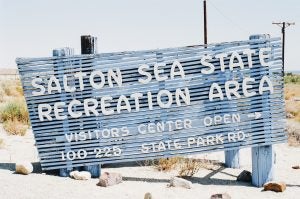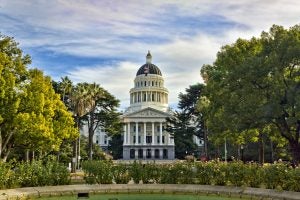This post was co-authored by Pablo Garza and Ronna Kelly.
The Salton Sea is California’s largest lake, but it’s hard to grasp its immense size – and beauty – until you see it with you own eyes. Last week, roughly 200 people gathered in this unique area – both residents and leaders from around the Salton Sea and from outside the region – for the Salton Sea Summit, a conference that explored the many challenges and solutions facing the Salton Sea region.
The summit was important because, as California Secretary for Natural Resources Wade Crowfoot noted during his keynote on the first day, the Salton Sea has “major problems.”
Chief among these: The Salton Sea is receding.
The shrinking of the Salton Sea is a longer-term trend that was exacerbated by the largest rural-urban water transfer in the U.S., finalized in 2003. Under the transfer, the Imperial Irrigation District agreed to send up to 300,000 acre-feet of Colorado River water per year to Los Angeles and San Diego. Since 2003, the Sea has receded more rapidly, exposing some 40 acres of new shoreline and toxic dust. This dust, in turn, is contributing to already poor air quality and high rates of respiratory illnesses in the region.
As part of the transfer agreement, the state committed to thousands of acres of dust suppression and habitat restoration projects, and state lawmakers and voters have approved $365 million in funding for such projects. But action has long been stalled, and local residents and leaders are fed up.
This frustration was evident at the summit and reached a boiling point on Tuesday when the Imperial County Board of Supervisors voted unanimously to declare a local emergency for air pollution at the Salton Sea. The vote came just days after state leaders stressed efforts to jump-start long-delayed projects at the summit.

The Salton Sea is California’s largest lake, covering 330 square miles, and a major drop along the Pacific Flyway for migratory birds. But it is receding, threatening to create a public health and ecological crisis. (Photo Credit: Kevin Dooley)











